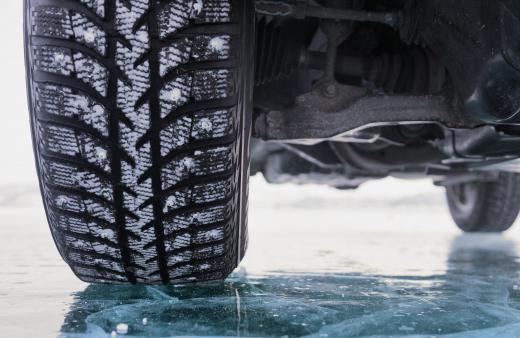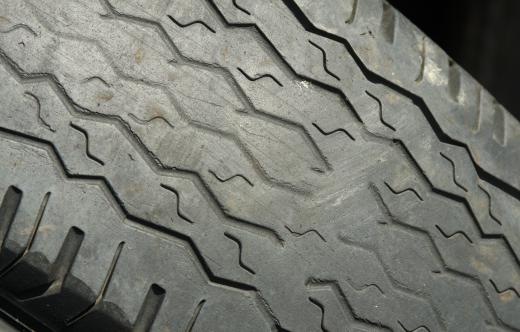Why do Bridges Freeze Before Roads?
 Mary McMahon
Mary McMahon
Most people who live in cold regions have seen signs which say “bridge freezes before road,” and many people are aware that caution should be used when driving on bridges during cold weather since they can freeze easily. Bridges freeze before roads for a number of reasons, most of which involve very basic science. Being aware of the conditions which make bridges freeze will make you a better driver, and if you live in a cold region of the world, make sure that newcomers to your area are aware of the danger of bridges during cold or icy weather.
There are three main reasons why bridges freeze before roads. The first is that a bridge is exposed from below and above, unlike a roadway. Roads don't freeze over as quickly because they can take advantage of insulation and warmth from the soil below. Bridges, on the other hand, are beset with cold temperatures from all sides, which can cause them to ice over quickly. Bridges also freeze rapidly because many of them are located over cold spots, like frozen rivers or deep ravines.

The third reason that bridges freeze before roads is their construction. The materials used in the core of a bridge are excellent heat conductors. As a result, they draw heat out from the inside of the bridge, transferring it to the surface where it is quickly lost when ambient temperatures are very cold. Bridges often quickly reach the general air temperature, so when the thermometer reads 32 degrees Fahrenheit (0 degrees Celsius), the bridge will freeze.

You should be careful when driving on bridges in icy weather, even if you don't see ice on the bridge. Sometimes, ice can hide under patches of snow, causing you to lose control. This is especially true in areas which do not salt, sand, or plow regularly; an accumulation of ice and snow may have settled on the bridge, making it very dangerous. In addition, ice can sometimes be hard to see on dark roadways, especially at night, when ambient temperatures get even colder.

Because bridges freeze before roads, you should assume that bridges are frozen when the ambient temperature is very cold, even if the roads are clear. Always drive cautiously in cold weather, and use chains or snow tires in regions where they are recommended. It is also a good idea to check tread wear on a regular basis, and you should change your tires out if they become worn, as this can be very dangerous on icy roads. Should you lose control of your car on an icy patch, remove your foot from the accelerator and concentrate on steering out of the skid; do not brake suddenly or turn the wheel sharply, as this can cause you to fishtail, skid, or flip.
AS FEATURED ON:
AS FEATURED ON:













Discussion Comments
I'm always a little scared when driving over bridges in cold weather. I hit one of those hidden icy patches once, and it was terrifying. I thought I was going to go right over the side of the bridge!
It makes it even worse that most bridges are on an incline. Who wants to hit ice while driving up a hill? You can slide right back down! I use extreme caution now. Those warning signs are put there for a reason.
I remember seeing the signs as a kid that said "bridge freezes before road," and thinking it was kind of silly. I didn't understand how or why that would be possible.
It makes perfect sense now though. I especially understand how a bridges freezes first because it is subjected to the cold temperatures from all sides.
Thank you for explaining all of this.
Post your comments